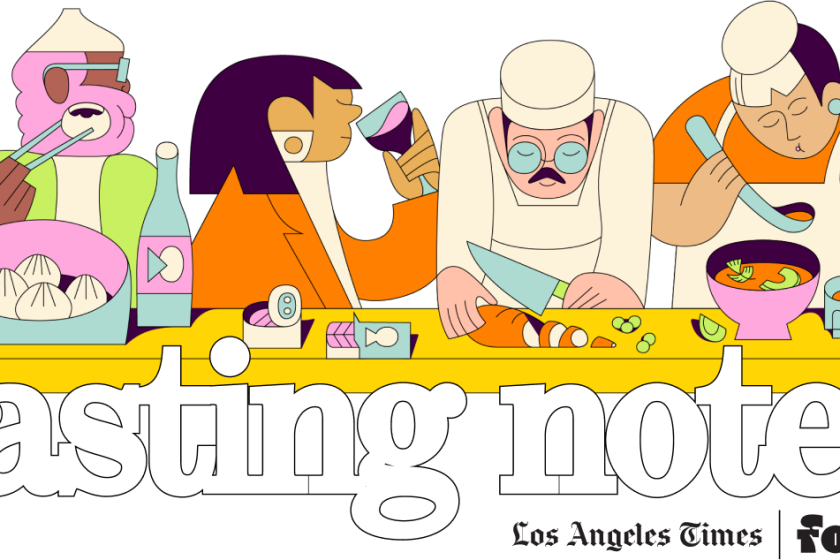How Yangban’s accomplished chefs made their Arts District draw even better
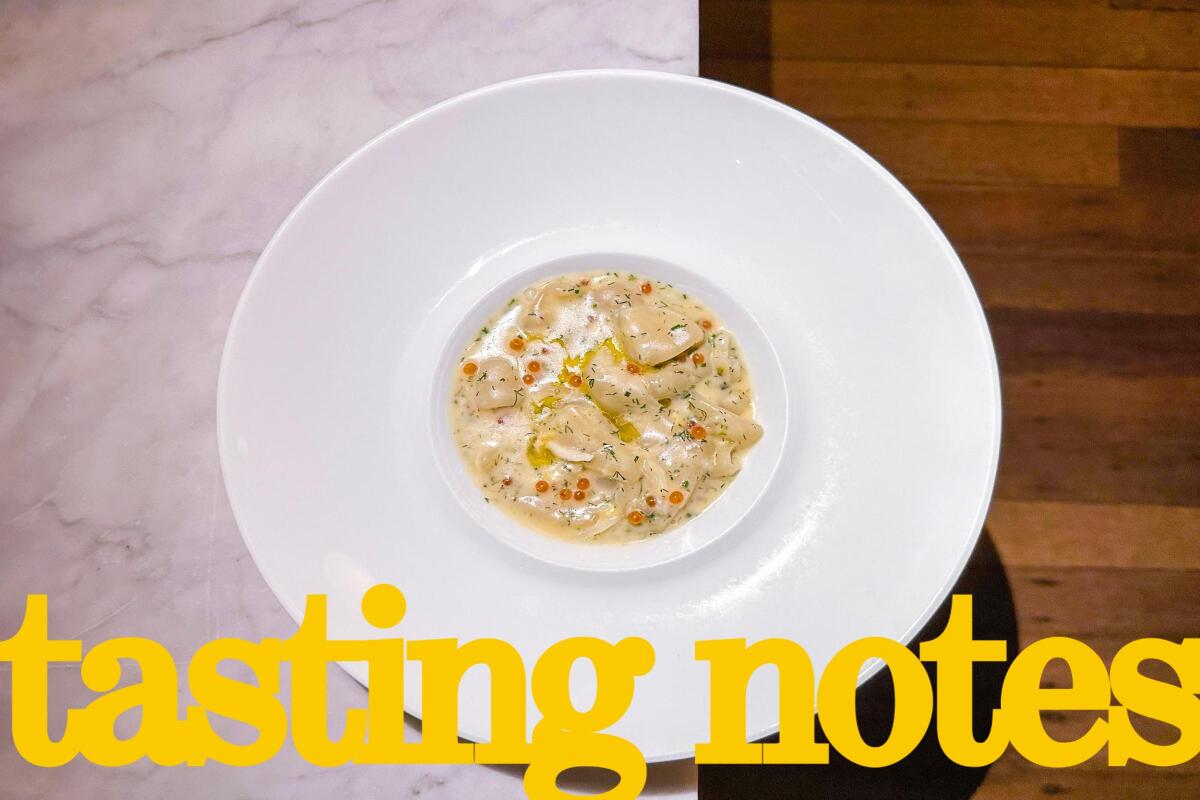
How Yangban in downtown’s Arts District is evolving in all the right ways, plus the secret behind astonishingly delicious apricot jam
- Share via
“In its layout, Yangban Society feels like a work in progress: Will the market area stick? Will the deli and separate kitchen menu eventually merge into one easier-to-navigate experience?”
Nothing is ever a foregone conclusion in the restaurant industry, but I wrote those questions at the end of my March 2022 review of Yangban Society in downtown’s Arts District — now officially shortened to Yangban — feeling pretty certain the physical flow of the 5,000-square-foot restaurant would eventually change.
The confusing ordering system is gone
The cooking from couple Katianna and John Hong was personal and persuasive right from the start: an exploration of identity from two accomplished Korean American chefs, grafting cornerstone Korean ingredients and dishes with, among other influences, the Ashkenazi Jewish flavors they both knew growing up. (Katianna’s adopted father is Jewish; John was raised in Highland Park, Ill., among a longstanding Jewish community.)
Their initial impulse to frame Yangan as a reimagined delicatessen made sense for the 5,000-square-foot space they took over after the COVID-19 crisis quickly felled Lincoln Carson’s Bon Temps, its previous tenant. The Hongs were invested in the upstairs area of the room they called the Super, a standalone market where customers went to grab drinks separately from their food order and where Korean snacks and drinks and even some streetwear were sold.
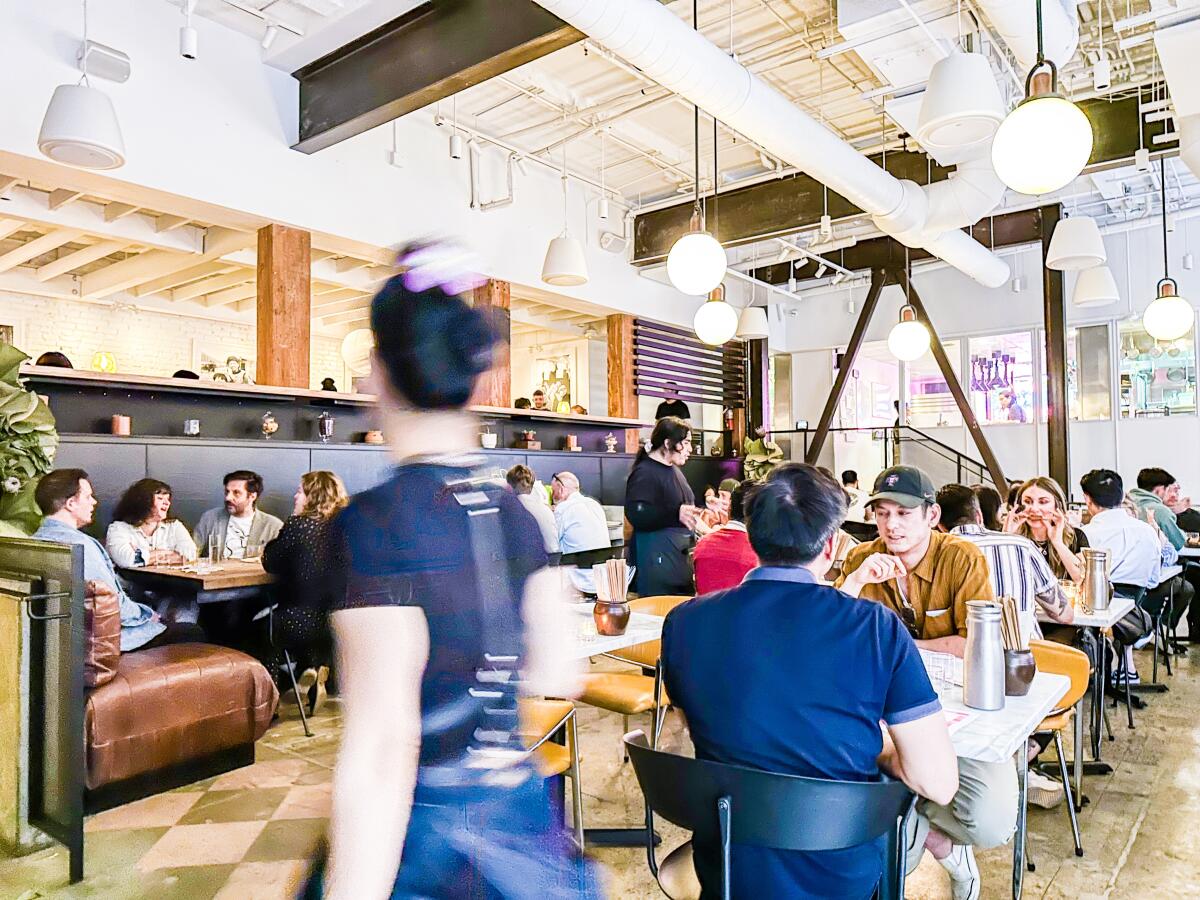
In theory, the idea felt casual and flexible. In practice, it could be confusing and clunky as a customer experience, and the Hongs fairly quickly began experimenting with ways to make service flow more easily in the format, and with times of day the restaurant might best find an audience.
In the last month, to co-opt “X-Men” language, Yangban’s evolution took a giant leap forward.
The setup is now table service at dinner; no more retrieving drinks from the Super separately. Banquettes wrap around the large main room where twin deli cases once stood, and the floor holds two- and four-tops rather than communal tables. The tone hasn’t changed — dining here doesn’t suddenly feel formal — but the form feels far more functional and cohesive.
And the food? Better than ever.
Enjoying this newsletter? Consider subscribing to the Los Angeles Times
Your support helps us deliver the news that matters most. Become a subscriber.
This is the definition of personal-narrative cooking
If you came to Yangban early in its run, many of the standout items that were displayed in the deli case now fall under the small-plates “banchan” section of the menu. The avocado and Shinko pear salad with hot mustard and almond is there, as are the deliciously reedy pea shoots and chives and the honey-glazed carrots with walnuts (tweaked now with whipped yogurt and dates). Hot-smoked trout schmear, another favorite from the starting lineup, remains as a starter served with hot griddled potato cakes.
Zero in on some fun new crisscrosses, including fried cylinders of sausage, in texture somewhere between soondae and boudin blanc, dressed in dijonnaise using hot mustard, and a variation on kraut made with white kimchi.
The white kimchi subtly reappears in one of two soothing, slyly masterful new pasta dishes. A riff on sujebi, hand-cut noodles, appears as slippery dumplings in balanced, rich-sharp white kimchi beurre blanc speckled with dill and trout roe. Even more comforting: beautifully shaped mandu filled with Katianna’s grandmother’s recipe for matzo ball, a wheat-on-wheat conceit served in the kind of chicken broth that almost feels healing as you slurp it down. This is a masterclass on the kind of cooking that registers as simple and is anything but.
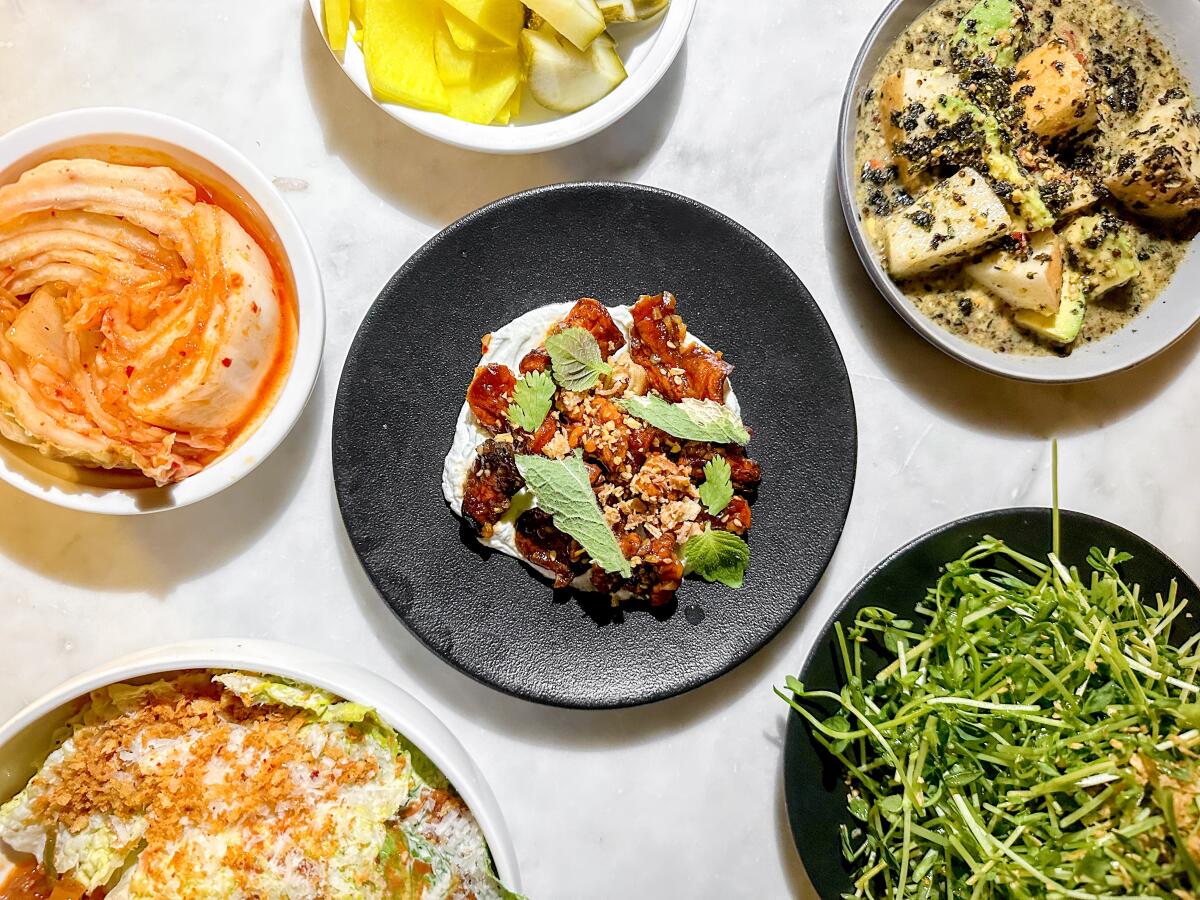
The sublime congee pot pie gilded with abalone? Gone, for now. The hearty rigatoni with black bean Bolognese has stuck around, and thank goodness the buffalo-milk soft serve ice cream still made the cut in the transition.
Yangban’s evolution continues this summer: The Hongs are closing the restaurant for August until early September to give the dining room the refresh they didn’t have the bandwidth to tackle when they opened during the pandemic. Nothing radical: new furniture and lighting fixtures, peeling back layers to expose brick, installing pieces from Asian American artists including Minjae Kim, Sammie Lee and Jane Yang D’Haene.
But the temporary closure is still a month away. I respect restaurants that continue to evolve when certain elements of their business don’t quite click — particularly when so much here already succeeds. Now is an excellent time to become acquainted, or reacquainted, with Yangban.
The secret to the best jam I’ve ever tasted? Several days in the sun
“The taste of the jam boomed stereophonically, as if two high-fidelity signals were converging. One relayed the flavors of fresh apricots, honeyed and floral and taut. The other piped in the essence of dried apricots. Not the sort of shriveled castoffs that have turned to stone in a cupboard’s farthest regions but the plump delights you find at farmers markets from vendors who maintain their own orchards, who sell dried fruits that still convey something of their original lushness.”
So this is a story — call it a reported personal essay? — that I’ve been thinking on for a year. It centers around a style of Lebanese Syrian apricot jam that achieves its flavor by baking in the hot sun for several days. I spent a day this time last year with Amer Budayr, who spends several weeks a year laboring over the jam, but in the way of things it’s about far more than preserved fruit.
You might even scroll through the piece just to gaze at the gorgeous photographs by Ian Bates, who spent the day of jam-making with me last year.
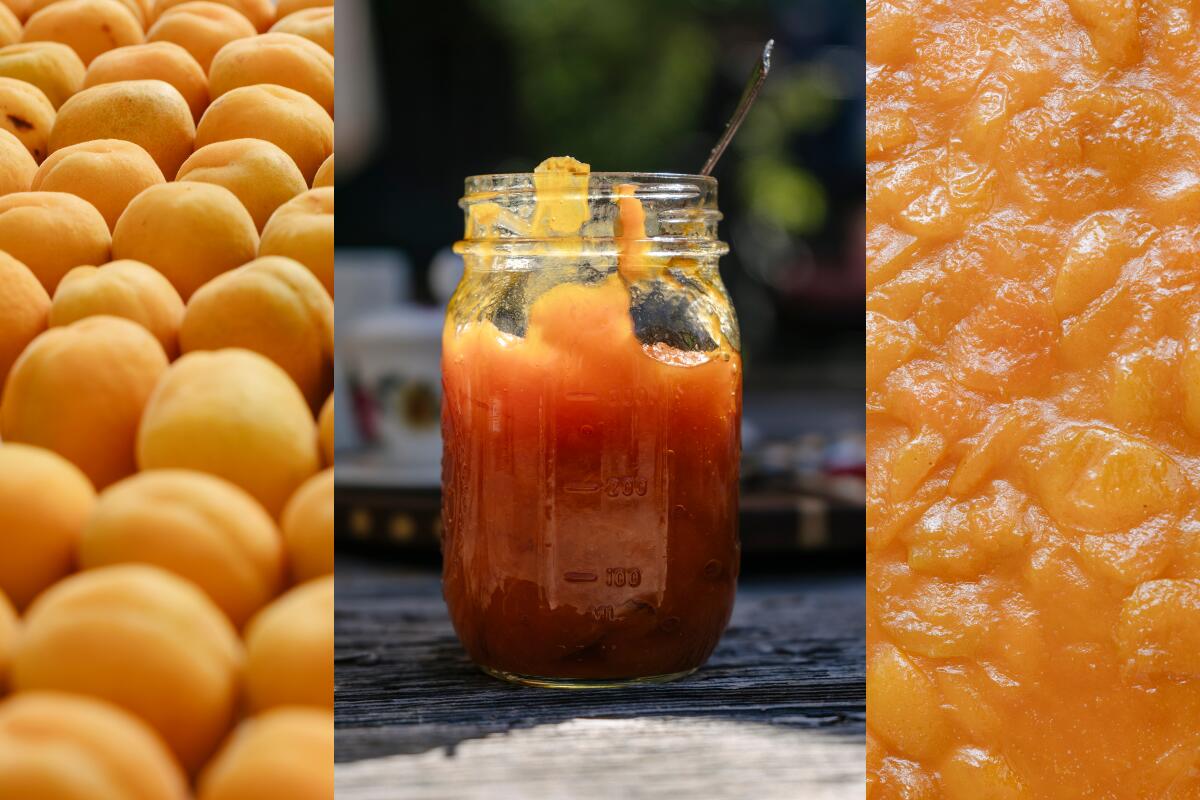
Have a question?
Also ...
— Lucas Kwan Peterson has the official bottled water power rankings.
— The delights of tinned seafood are here to stay. These are the Food team’s favorite restaurants and bars for lingering over conservas.
— Jenn Harris names the best place she’s found for Hong Kong- and Macau-style dan tat, the any-time-of-day egg tarts.
— Stephanie Breijo has the scoop on a long-anticipated Sichuan restaurant that just opened its first Los Angeles location.
— Readers have thoughts about Cindy Carcamo’s piece about the rise of restaurant service fees.
— June isn’t officially over until you read this wonderful story, by Melissa Mora Hidalgo, about a couple making Pride wine in the Santa Ynez Valley and donating 60% of proceeds to local LGBTQ+ organizations like Santa Ynez Valley Pride and the Rainbow House Inc.
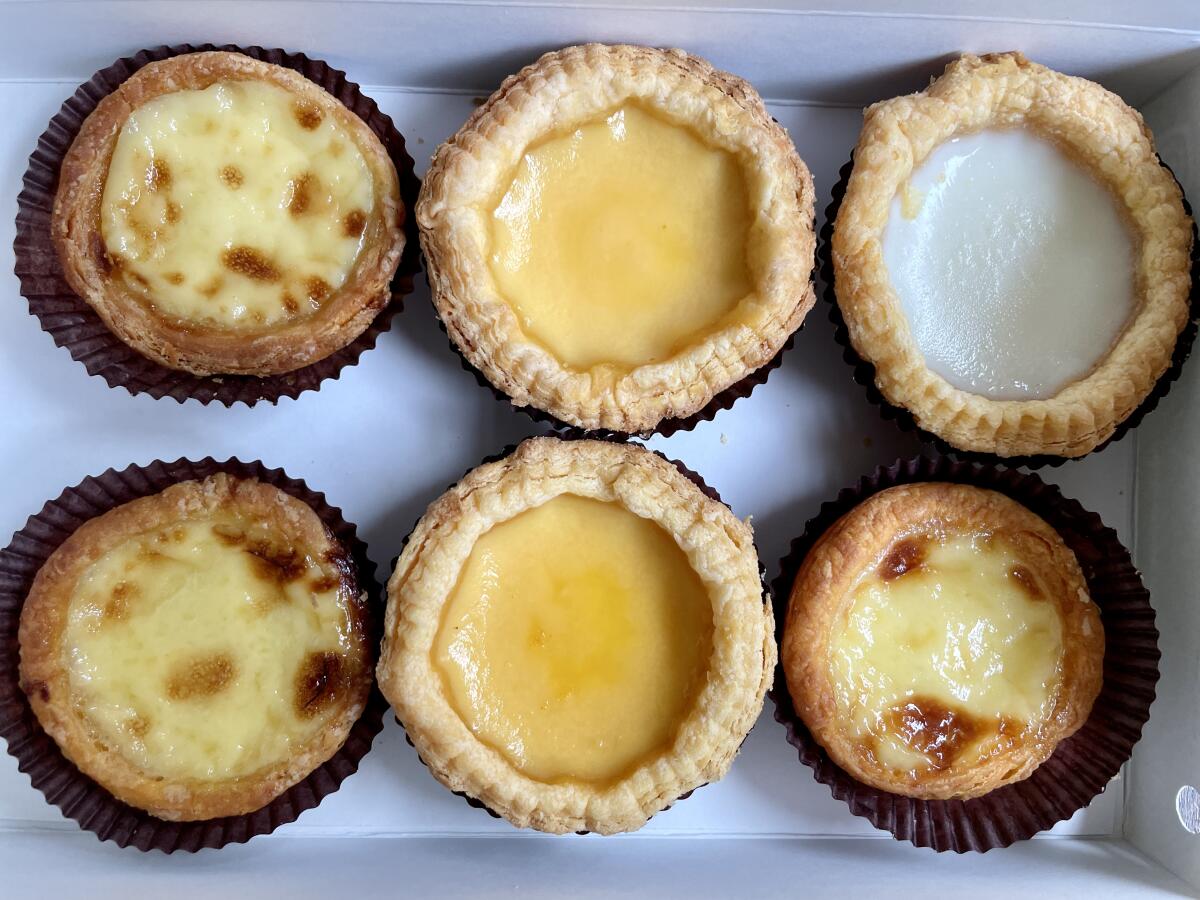
Sign up for the Tasting Notes newsletter
Eat your way across L.A.
Get our weekly Tasting Notes newsletter for reviews, news and more.
You may occasionally receive promotional content from the Los Angeles Times.
